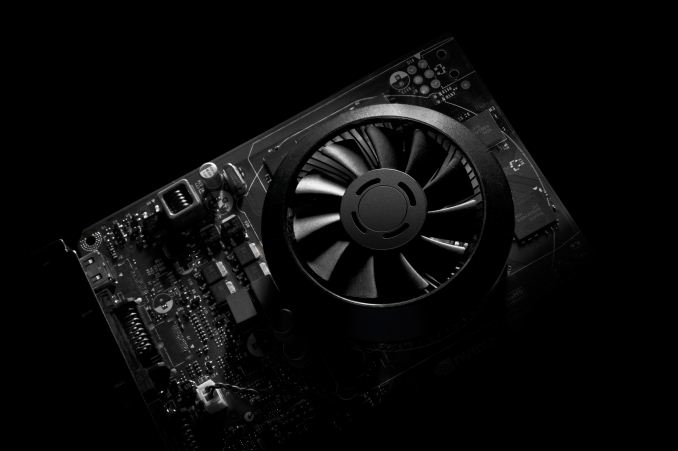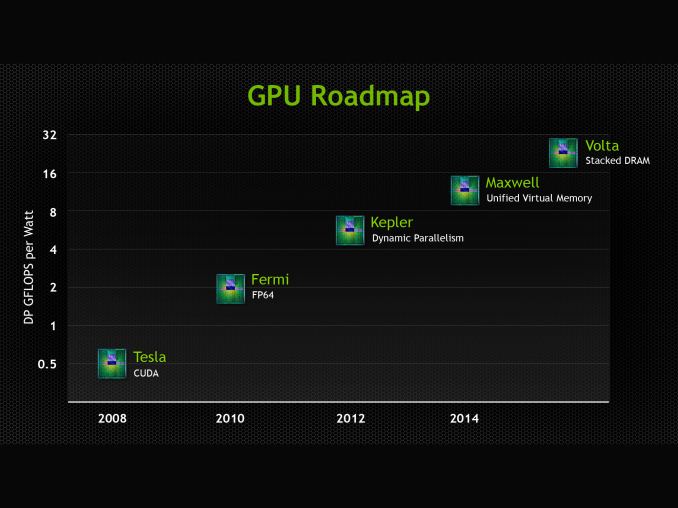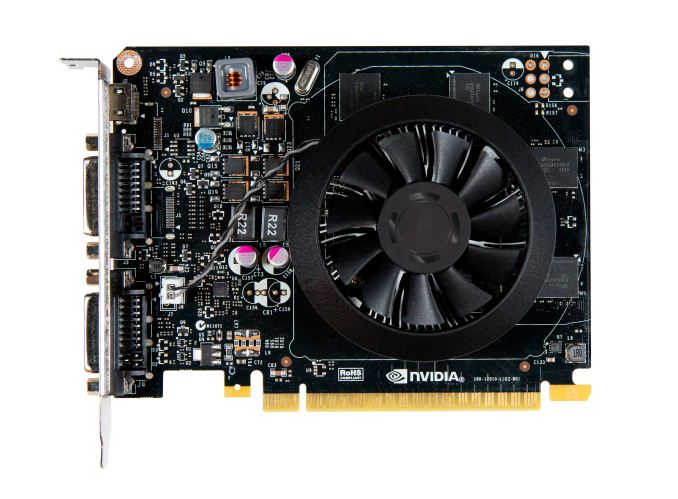The NVIDIA GeForce GTX 750 Ti and GTX 750 Review: Maxwell Makes Its Move
by Ryan Smith & Ganesh T S on February 18, 2014 9:00 AM EST
As the GPU company who’s arguably more transparent about their long-term product plans, NVIDIA still manages to surprise us time and time again. Case in point, we have known since 2012 that NVIDIA’s follow-up architecture to Kepler would be Maxwell, but it’s only more recently that we’ve begun to understand the complete significance of Maxwell to the company’s plans. Each and every generation of GPUs brings with it an important mix of improvements, new features, and enhanced performance; but fundamental shifts are fewer and far between. So when we found out Maxwell would be one of those fundamental shifts, it changed our perspective and expectations significantly.
What is that fundamental shift? As we found out back at NVIDIA’s CES 2014 press conference, Maxwell is the first NVIDIA GPU that started out as a “mobile first” design, marking a significant change in NVIDIA’s product design philosophy. The days of designing a flagship GPU and scaling down already came to an end with Kepler, when NVIDIA designed GK104 before GK110. But NVIDIA still designed a desktop GPU first, with mobile and SoC-class designs following. However beginning with Maxwell that entire philosophy has come to an end, and as NVIDIA has chosen to embrace power efficiency and mobile-friendly designs as the foundation of their GPU architectures, this has led to them going mobile first on Maxwell. With Maxwell NVIDIA has made the complete transition from top to bottom, and are now designing GPUs bottom-up instead of top-down.
Nevertheless, a mobile first design is not the same as a mobile first build strategy. NVIDIA has yet to ship a Kepler based SoC, let alone putting a Maxwell based SoC on their roadmaps. At least for the foreseeable future discrete GPUs are going to remain as the first products on any new architecture. So while the underlying architecture may be more mobile-friendly than what we’ve seen in the past, what hasn’t changed is that NVIDIA is still getting the ball rolling for a new architecture with relatively big and powerful GPUs.
This brings us to the present, and the world of desktop video cards. Just less than 2 years since the launch of the first Kepler part, the GK104 based GeForce GTX 680, NVIDIA is back and ready to launch their next generation of GPUs as based on the Maxwell architecture.
No two GPU launches are alike – Maxwell’s launch won’t be any more like Kepler’s than Kepler was Fermi’s – but the launch of Maxwell is going to be an even greater shift than usual. Maxwell’s mobile-first design aside, Maxwell also comes at a time of stagnation on the manufacturing side of the equation. Traditionally we’d see a new manufacturing node ready from TSMC to align with the new architecture, but just as with the situation faced by AMD in the launch of their GCN 1.1 based Hawaii GPUs, NVIDIA will be making do on the 28nm node for Maxwell’s launch. The lack of a new node means that NVIDIA would either have to wait until the next node is ready, or launch on the existing node, and in the case of Maxwell NVIDIA has opted for the latter.
As a consequence of staying on 28nm the optimal strategy for releasing GPUs has changed for NVIDIA. From a performance perspective the biggest improvements still come from the node shrink and the resulting increase in transistor density and reduced power consumption. But there is still room for maneuvering within the 28nm node and to improve power and density within a design without changing the node itself. Maxwell in turn is just such a design, further optimizing the efficiency of NVIDIA’s designs within the confines of the 28nm node.
With the Maxwell architecture in hand and its 28nm optimizations in place, the final piece of the puzzle is deciding where to launch first. Thanks to the embarrassingly parallel nature of graphics and 3D rendering, at every tier of GPU – from SoC to Tesla – GPUs are fundamentally power limited. Their performance is constrained by the amount of power needed to achieve a given level of performance, whether it’s limiting clockspeed ramp-ups or just building out a wider GPU with more transistors to flip. But this is especially true in the world of SoCs and mobile discrete GPUs, where battery capacity and space limitations put a very hard cap on power consumption.
As a result, not unlike the mobile first strategy NVIDIA used in designing the architecture, when it comes to building their first Maxwell GPU NVIDIA is starting from the bottom. The bulk of NVIDIA’s GPU shipments have been smaller, cheaper, and less power hungry chips like GK107, which for the last two years has formed the backbone of NVIDIA’s mobile offerings, NVIDIA’s cloud server offerings, and of course NVIDIA’s mainstream desktop offerings. So when it came time to roll out Maxwell and its highly optimized 28nm design, there was no better and more effective place for NVIDIA to start than with the successor to GK107: the Maxwell based GM107.
Over the coming months we’ll see GM107 in a number of different products. Its destiny in the mobile space is all but set in stone as the successor to the highly successful GK107, and NVIDIA’s GRID products practically beg for greater efficiency. But for today we’ll be starting on the desktop with the launch of NVIDIA’s latest desktop video cards: GeForce GTX 750 Ti and GeForce GTX 750.













177 Comments
View All Comments
rish95 - Wednesday, February 19, 2014 - link
Yes. You can run PCIe 3.0 cards on 2.0 slots.rish95 - Wednesday, February 19, 2014 - link
This card is quite literally jesus for me. I've been waiting for something like this for a few years now.Currently I'm running an Athlon II X4 with a GT 240 on an OEM 250W PSU. I know it sounds like that may be a bit much for the PSU, but it's been working fine for years.
There haven't been any cards without external power connectors released since the GT 240 that have been significantly faster. I know I could have jumped to an HD 7750, but it's still not that much of an improvement. Now I can get a massive 3-4X performance boost without upgrading my PSU.
I hope this was worth the wait. I've had a copy of Crysis 3 for some time that I couldn't use because the 240 doesn't support DX11.
cbrownx88 - Wednesday, February 19, 2014 - link
Good for you man! This does sound like quite the fit! Hope your power supply keeps hangin in there!Antronman - Wednesday, February 19, 2014 - link
These cards will barely be able to run Crysis 3.rish95 - Wednesday, February 19, 2014 - link
Did you even read the review? It seems to manage 36 FPS at high settings at 1080p.I don't need Very High and I don't need 60 FPS. I just need it to look pretty good and run at a playable frame rate at native res.
This does seem to fit the bill.
Qwertilot - Thursday, February 20, 2014 - link
The only worry in some ways is that the 20nm version of this is inevitably going to be non trivially better at the same sort of power draw. I guess it isn't at all certain if they'll do a roughly equivalent one now though. Obviously not terribly soon. Might end up skipping to 16nm or something.HighTech4US - Wednesday, February 19, 2014 - link
Quote: NVIDIA is making a major effort to target GTX 550 Ti and GTS 450 owners as those cards turn 3-4 years old, with the GTX 750 series able to easily double their performance while reducing power consumption.And they have gotten me to upgrade my HTPC GPU that was on an EVGA GTS 450 to a brand new EVGA 02G-P4-3753-KR GeForce GTX 750 Ti Superclocked 2GB which I just purchased on Newegg for $160.38.
http://www.newegg.com/Product/Product.aspx?Item=N8...
This card is factory overclocked at Core Clock: 1176MHz Boost Clock: 1255MHz has a DisplayPort connector and a better copper heat assisted heat sink and fan shroud that exits some of the heat out the back bracket.
I will be selling my old EVGA GTS 450 on eBay and should clear $60 so I will have a very nice card for the next 3-4 years for an upgrade price of around $100. Not bad at all.
pierrot - Wednesday, February 19, 2014 - link
Awesome this ITX friendly size is the standard, just need power nowninjaquick - Thursday, February 20, 2014 - link
As neat as this is, it only proves that Maxwell scales within its TDP. It is consistent where it is at.devdollers@gmail.com - Friday, February 21, 2014 - link
wow..............